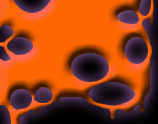Araneus diadematus
The garden spider is the best known orb-weaving spider in the UK.

Life span
One to two years.

Physical Description
The female of the species ranges from 10-13mm, and the male is 4-8mm. They vary in colour from pale yellow or brown to almost black, but they can always be identified by the white cross-shaped group of spots on their abdomens.

Distribution
Garden spiders are found all over Britain except for some locations in northern Scotland. They are also found in almost every country in the northern hemisphere.

Habitat
They are commonly found on bushes and other vegetation in parks, gardens and woodland.

Diet
Garden spiders feed on flying insects including butterflies, wasps and flies. They tend to ignore smaller prey such as greenflies.

Behaviour
Garden spiders build a circular orb-web with a recognisable spiral pattern. They sit in the centre waiting for an insect to collide into the web. The spider then rushes towards the trapped insect and wraps it in bands of sticky silk. When the insect is immobilised, the spider will finish off the insect with a bite and an injection of venom. It will then take the wrapped-up insect to the hub of the web where it devours its victim.

Reproduction
The much-smaller male waits near the web of the female until she is mature. He then cautiously approaches her while plucking the strands of the web to let her know that he is not food. If the male survives after mating, he may go on to mate again. Occasionally though, the male is mistaken for a meal and is eaten by the female.
After the female has mated, her body will become swollen with eggs. The female then builds a silken egg sac and lays her eggs in it. Her life is now dedicated to protecting these eggs and she will sit with them, unable to hunt, until she dies in late autumn. The spiderlings will hatch out in May of the following year.

